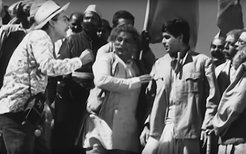Emotions and Temporality. Feeling for the Future (South Asia 1912–1970)
Margrit Pernau
Like in most colonial and post-colonial states, modernity is a central concept for debates in 20th-century India and Pakistan. It marks the emotional aspirations for the future and provides an orientation for decisions ranging from economics to nationalism, from education to bodily regimes. It is all the more surprising that “modernity” was not translated into Urdu until the 1960s.
The project investigates the semantic net developed around this concept: terms for the past, present, and future; for epochs and their transformation, such as decline, progress, and stagnation; images and metaphors connected to different times; and, most importantly, the emotional qualities ascribed to different times. Emotions and temporalities, the argument runs, are intimately linked—it is only by systematically including the emotions that we are able to understand the temporal imaginations and hence also the temporal strategies of historical actors. A first exploration of this method for a case study from the 19th century, exploring the writings of Sir Saiyid Ahmad Khan, the founder of the reformist Muslim University at Aligarh, has been published in History and Theory in 2019.
In order to avoid a focus on canonical texts written by great (male) thinkers, the sources under investigation consist mostly of journal articles, which are placed in conversation with visual material and films (chapter accepted for publication: “Nāyā Daur. Concepts, Experiences and Emotions of the new era in the Nehruvian Era,” Experience near concepts, ed. Rajeev Bhargava and Neeladri Bhattacharya, Cambridge University Press).
The project faces two methodological and theoretical challenges. The first is presented by the fact that most of the historical actors I am investigating were multilingual, i.e., they thought, spoke, and wrote not only in Urdu, but also in English. Assuming a close relation between imaginations, concepts, and emotions, this means that they had to constantly negotiate not only between languages, but also between what they felt in the different languages. This has been investigated in a case study (chapter accepted for publication: “Vernacularizing Emotions: Mohammed Ali’s Comrade and Hamdard,” Language Ideologies and the “Vernacular” in Colonial and Postcolonial South Asia, ed. Nishat Zaidi and Hans Harder, Routledge).
The second challenge consists in the global dimension of the emotions linked to temporal imagination. This has been laid out in a short monograph, emphasizing the categories of atmosphere and resonance, and drawing on hauntology (Derrida, Kleinberg).
Key References

